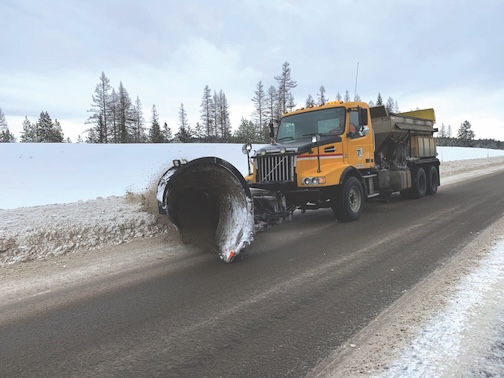EOU grad talks about successful effort to designate site on Snake River as Chinese Massacre Cove
Published 2:41 pm Tuesday, March 16, 2010
Jeff Ford was not about to take no for an answer.
Trending
Not with the dustbin of history lurking for one of the worst crimes in this region’s history.
Three and a half years ago Ford was working to get the cove where
Deep Creek enters the Snake River a name – a name recognizing the up to
Trending
34 Chinese miners murdered by a gang of horse thieves in May 1887.
“I did not want the incident to be forgotten,” Ford, a Boise resident, said Saturday at a meeting of the Union County Historical Society.’
Ford was attempting to get the Oregon Geographic Names Board to designate the murder site Chinese Massacre Cove. He was working as an outsider but one with knowledge and connections. Ford had served on the Oregon Geographic Names Board for seven years from the mid-1970s through the early 1980s. He next served an 18-year stint on the Idaho Geographic Names Board after moving to Boise.
This background aided Ford in his efforts.
“I knew the steps that need to be taken,” Ford said.
Ford succeeded in his quest, getting the Oregon Geographic Names Board to designate the cove at Deep Creek site as Chinese Massacre Cove about a year ago. The board made its decision at a meeting in Enterprise. Some in the community voiced objections at the meeting, arguing that the name might discourage people from visiting the site, which is about four miles from Dug Bar.
Today Ford can rest easier, knowing that it is unlikely Father Time will erase our collective awareness of the tragic murders. He stressed that the name was not added to commemorate the horrible incident, but instead to keep the story on the forefront of our minds.
“When you attach a name to a geographic site we are reminded of what took place there,” Ford said.
What took place in May 1887 was not known until weeks later when the bodies of the Chinese miners began arriving in the Snake River at Lewiston.
Ford said some in Wallowa County have tried to keep the crime under history’s radar, hoping that time would whitewash the incident from the forefront of minds. This would be unacceptable in Ford’s eyes.
“It is beyond forgetting,” he said.
The Chinese miners were killed by what is believed to have been a gang of seven horse thieves. The murderers fled with between $4,000 and $5,000 worth of gold after tossing their victims in the Snake River, according to a new book on the incident, “Massacred for Gold, The Chinese In Hells Canyon” by R. Gregory Nokes. The book came out in 2009 and Ford describes it as an excellent account of the case, one adding a wealth of new details.
Three people were arrested and charged with murder in the 1887 case but they were never convicted.
Ford hopes that assigning the name Chinese Massacre Cove to the Hells Canyon murder site will encourage people to read Nokes’ book and other accounts of the incident.
Ford grew up in Warrenton and is a 1956 graduate of EOU, then named Eastern Oregon College.
The stories he shared about geographic place names Saturday addressed more than Chinese Massacre Cove. One concerned Nyssa, for which a definitive reason for its name has never been found. Ford, noting that the Malheur County town was a major site for sheep ranchers when it was named in the 1880s, has his own theory. He believes that Nyssa stands for New York Sheep Shipping Association, an organization that may have operated in Malheur County in the late 1800s.
Ford, who earlier was an administrator at Treasure Valley Community College for 18 years, encourages everyone to check out the stories connected to geographic names.
“Behind every good name is a story. That makes up the history we all so love.”









